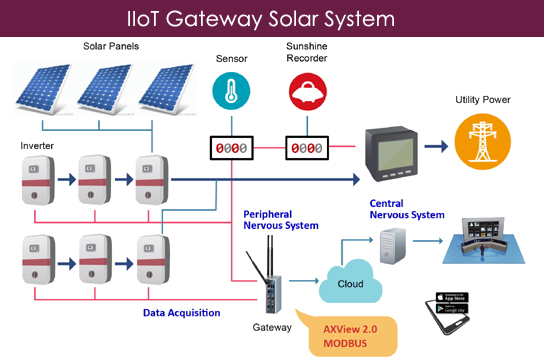In today’s world, harnessing renewable energy sources is crucial for a sustainable future. Solar and wind energy are two of the most prominent sources of renewable energy, and they have seen remarkable advancements in recent years. Embedded systems play a pivotal role in optimizing the efficiency and reliability of renewable energy systems. In this blog post, we’ll explore the significance of embedded systems in the context of solar and wind energy, how they work, and their impact on the renewable energy landscape.
Introduction
Renewable energy has become a cornerstone of our efforts to combat climate change and reduce our dependence on fossil fuels. Among the various sources of renewable energy, solar and wind power have garnered significant attention due to their environmental benefits and widespread availability. However, the intermittent nature of these energy sources presents unique challenges that must be overcome to ensure a stable and reliable power supply. This is where embedded systems come into play.
The Role of Embedded Systems in Renewable Energy
Embedded systems are specialized computing devices that are integrated into larger systems to perform dedicated functions. In the context of renewable energy, they are essential for the following reasons:
- Data Acquisition and Monitoring
Embedded systems are used to collect and process data from various sensors and devices in renewable energy installations. For solar power, they monitor parameters like sunlight intensity, temperature, and system voltage. In wind power, they measure wind speed, direction, and turbine performance. This real-time data helps optimize energy production and ensures the safety and longevity of the equipment. - Control and Automation
Efficient energy conversion and distribution require precise control of equipment. Embedded systems control inverters, charge controllers, and grid interfaces in solar power systems, as well as pitch and yaw systems in wind turbines. They adjust parameters in response to changing environmental conditions to maximize energy capture and minimize wear and tear. - Predictive Maintenance
Maintaining renewable energy systems can be challenging, especially in remote locations. Embedded systems use predictive algorithms to detect and diagnose faults before they cause system failures. This proactive approach reduces downtime and maintenance costs, ensuring a consistent power supply. - Energy Storage Management
Energy storage is critical for balancing supply and demand in renewable energy systems. Embedded systems control battery charging and discharging, ensuring that excess energy is stored for later use and preventing overcharging or deep discharge, which can damage batteries.
Solar Power and Embedded Systems
Maximizing Solar Energy Harvest
Solar power systems rely on photovoltaic (PV) panels to convert sunlight into electricity. Embedded systems play a crucial role in optimizing energy capture by tracking the sun’s movement, adjusting panel angles, and regulating the voltage and current delivered to the grid. These systems also monitor the health of PV panels and identify underperforming modules, enhancing the overall efficiency and lifespan of the installation.
Grid Integration
To feed solar-generated electricity into the grid, embedded systems ensure that the power output matches grid requirements. They synchronize with the grid’s frequency and voltage, preventing disruptions and enabling seamless integration of solar power into the electrical network. Additionally, they provide safety features like anti-islanding to protect utility workers during maintenance.
Off-Grid Solutions
In remote areas or during power outages, solar power combined with energy storage offers a reliable off-grid solution. Embedded systems manage the energy flow between the solar panels, batteries, and connected appliances, providing a sustainable source of electricity where conventional power sources are unavailable.
Wind Power and Embedded Systems
Wind Turbine Control
Wind turbines are complex machines that require precise control to operate efficiently and safely. Embedded systems adjust the blade pitch and yaw to capture the maximum energy from the wind while preventing structural damage due to excessive loads. They also monitor gearbox health and adjust the generator’s output to match grid requirements.
Wind Farm Optimization
Wind farms consist of multiple turbines that must work together harmoniously. Embedded systems in wind farms coordinate the operation of individual turbines to optimize power output while minimizing wake effects. This results in higher energy yields and reduced wear on the turbines.
Remote Monitoring
Many wind farms are located in remote or offshore locations, making maintenance challenging. Embedded systems enable remote monitoring and diagnostics, reducing the need for on-site inspections. Maintenance teams can identify issues early and plan interventions more effectively, reducing downtime and operational costs.
The Future of Embedded Systems in Renewable Energy
As the renewable energy sector continues to grow, the role of embedded systems will become even more critical. Advances in sensors, communication technologies, and artificial intelligence will enable these systems to operate more efficiently, predict and prevent failures, and adapt to changing environmental conditions in real-time.
Furthermore, the integration of renewable energy sources into smart grids will rely heavily on embedded systems to manage the complex interactions between distributed energy resources, storage systems, and consumer demand. These systems will play a pivotal role in achieving a reliable and resilient energy infrastructure.
Conclusion
Embedded systems are the unsung heroes behind the scenes of solar and wind energy generation. Their ability to monitor, control, and optimize renewable energy installations is instrumental in harnessing the full potential of these sustainable power sources. As technology continues to advance, we can expect embedded systems to play an increasingly vital role in shaping the future of renewable energy, making it more accessible and reliable for communities around the world. By investing in these intelligent systems, we can accelerate our transition to a cleaner and greener energy future.


